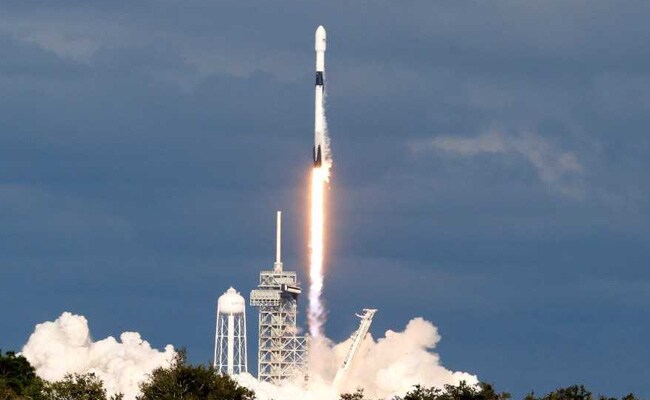Elon Musk’s space exploration company, SpaceX, has joined forces with the Indonesian government to launch a satellite from the United States with the aim of providing high-speed internet to remote areas in Indonesia. With over 17,000 islands comprising the sprawling archipelago, more than a third of Indonesia’s population lacks internet access, particularly in far-flung regions of the country.
The satellite, named SATRIA-1 and manufactured by French defense electronics company Thales, took off from a launch station in Florida in the early hours of Monday, Indonesia time, propelled by a SpaceX Falcon 9 rocket.
SpaceX announced on its website, “SpaceX launched the PSN SATRIA mission to a geosynchronous transfer orbit from Space Launch Complex 40 at Cape Canaveral Space Force Station in Florida.”
The cost of constructing the satellite amounted to $540 million, and the Indonesian government envisions that it will serve as a crucial link to connect 90,000 schools, 40,000 hospitals, and government buildings across the country.
Indonesian President Joko Widodo expressed his enthusiasm for the project, highlighting that SATRIA-1 is the “first government-owned multi-function satellite with the biggest capacity in Asia.” In an Instagram post on Monday, President Widodo mentioned that the satellite will be positioned above Papua province, which constitutes Indonesia’s easternmost region. Its primary purpose is to provide internet access, particularly for education, healthcare, and public services in remote and isolated areas. Mahfud MD, the acting communication and informatics minister, stressed the significance of the satellite, saying,
“Satellite technology will accelerate internet access to villages in areas that cannot be reached by fiber optics in the next 10 years.”
Expected to be operational by 2024, SATRIA-1 is anticipated to deliver an impressive connection speed of 150 gigabytes per second. This is three times faster than the current speed of satellite internet in the Indonesian archipelago. Thales, in a press release, emphasized that the satellite would play a pivotal role in bridging the digital divide in Indonesia and be the most powerful in the Southeast Asia region.
The construction of SATRIA-1 faced delays due to the challenges posed by the Covid-19 pandemic and the war in Ukraine, according to Erry Riyana Hardjapamekas, the president commissioner of PT Pasifik Satelit Nusantara (PSN), who addressed the audience during the satellite launch. PSN is collaborating with the Indonesian government on this significant project. The successful deployment of the 4.5-tonne satellite into orbit marks a milestone achievement for the country.
Once operational, SATRIA-1 will offer internet connectivity to 50,000 public service points across Indonesia. This ambitious project aspires to leverage satellite technology to overcome the limitations of fiber optics and reach villages and remote regions that have previously been deprived of reliable internet access. With its impressive throughput capacity, the satellite will play a vital role in empowering communities, providing access to information, educational resources, and telemedicine services, ultimately contributing to the development and well-being of the population.
SpaceX’s involvement in this initiative further solidifies its reputation as a pioneering force in the space industry. The company’s expertise in satellite launches and its partnership with Thales has paved the way for the successful deployment of SATRIA-1. As advancements in technology continue to push the boundaries of what is possible, collaborations between private enterprises and governments serve as catalysts for transformative projects that address societal needs.
Indonesia’s commitment to bridging the digital divide is commendable. By investing in satellite technology and prioritizing the provision of internet access to even the most remote corners of the archipelago, the government aims to empower its citizens, enhance educational opportunities, improve healthcare services, and facilitate public administration. The successful launch of SATRIA-1 represents a significant step toward achieving these goals, as Indonesia seeks to create a more inclusive and connected society.
In conclusion, the joint venture between SpaceX and the Indonesian government has led to the successful deployment of the SATRIA-1 satellite, which holds the promise of bringing high-speed internet to remote areas across Indonesia. With its impressive capabilities and potential to bridge the digital divide, SATRIA-1 represents a significant milestone in the country’s efforts to provide equitable access to information, education, and healthcare services. As the satellite orbits above Papua province, it paves the way for progress, innovation, and connectivity in the farthest reaches of the Indonesian archipelago.
Read More:





 The Most Effective AI Tools For Academic Research
The Most Effective AI Tools For Academic Research